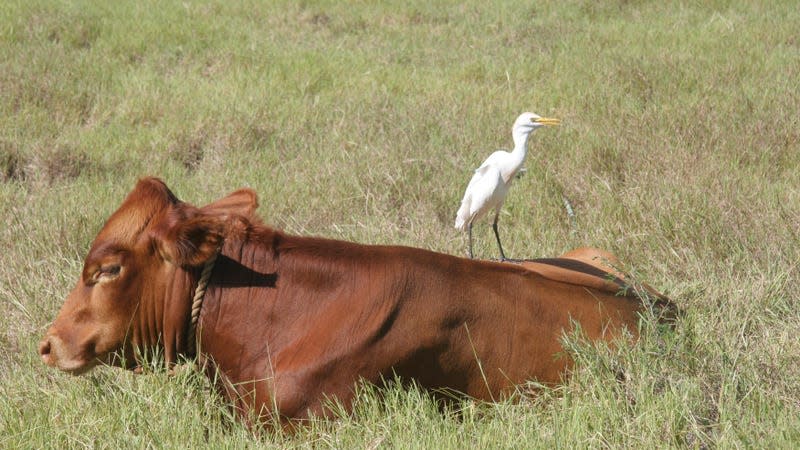How Worried Should We Be About Bird Flu Right Now?

Bird flu is once again setting many of us on edge. Early this week, health officials announced a human case of highly pathogenic H5N1 avian influenza in Texas, one that may have been caught from infected cows in the area. These recent cases in livestock and now humans are a real ongoing concern, but for the time being, the risk that bird flu poses to the public still appears to be low.
The human case was reported Sunday by Texas health officials and confirmed Monday by the Centers for Disease Control and Prevention. The person—identified only as a farm worker—tested positive for a strain of H5N1 influenza and had recently been exposed to cattle presumed to be infected with H5N1 as well. However, the person’s only reported symptoms so far has been eye redness, which is likely a sign of conjunctivitis, or pink eye. It’s the second human case of avian H5N1 ever reported in the U.S., following a case in 2022 involving a prison worker who was handling likely infected poultry.
The potential danger of H5N1 and other similar HPAI bird flu strains is very genuine, according to Amesh Adalja, senior scholar at the Johns Hopkins Center for Health Security.
“Avian influenza viruses have always been ranked as the highest pandemic threat because of their ability to cause severe disease and the history of avian influenza viruses sparking flu pandemics. For example, the 1918 influenza pandemic was caused by an avian virus,” Adalja told Gizmodo in an email. “These are viruses that often have high levels of virulence with little to no population immunity to combat them. This is markedly different from seasonal flu viruses for which there is population immunity, vaccination programs, and usually less virulence.”
Strains of H5N1 bird flu have been circulating for decades, sparking large and deadly outbreaks among wild birds and sometimes domestic poultry populations. But in the past few years, there have been increasing reports of H5N1 infections in mammals such as sea lions, minks, and dolphins. Last week, local and federal health officials first announced the discovery of H5N1 cases in cows on several dairy farms in Texas and Kansas. As of now, there have been cattle cases found in five states, while a cluster of cases was detected in goats on a Minnesota farm earlier in the month.
These livestock cases are unprecedented. And unlike other mammalian cases, the threat of further transmission to humans is more likely, given the close contact these animals would have with farm workers. Right now, there are many unsettled questions about the nature of these outbreaks. Officials have found dead or infected birds in the vicinity of these farms, explaining how the cases first began at least. But it is not clear yet whether strains of the virus have been transmitted from cow to cow.
“The key question is understanding how the cows are getting infected,” Adalja said.
As worrying as this is, not all of the news we’ve learned so far is bad. Preliminary genetic analysis of the strains collected from cattle has not yet found any telltale mutations that would make the virus clearly more capable of easily infecting or sickening mammals—humans included. According to the CDC, these strains also don’t appear to have picked up genetic changes that would make them resistant to existing antivirals. And while seasonal flu vaccines would not offer protection against H5N1, we do have the technology available to produce vaccines against these strains on short notice if needed, the CDC has said.
“The genetic evidence does not suggest that the virus has changed to make human to human transmission more likely,” Adalja noted.
Other aspects of the situation are currently impossible to know. Recent cases of human avian H5N1 have been rare but often deadly, with a mortality rate as high as 50%. But it’s not certain that strains adapted to spreading between humans would retain that level of virulence. At the same time, the covid-19 pandemic showed that a fast-spreading virus can still kill and harm plenty of people even when it isn’t very deadly on an individual level.
All of which is to say that H5N1 is a real problem that has to be understood and contained as soon as possible. The more time it has to spread in cows or other mammals, the more likely some strain will pick up the right combination of mutations that could turn it into a serious human disease. And even if these recent outbreaks are stamped out in time, scientists and health agencies will always have to stay vigilant against the risk of avian flu one day sparking a pandemic again.
For now, though, H5N1 is not necessarily destined to be the next virus everyone has to be worried about.
“Influenza remains the biggest pandemic threat that we face. However, at this time, it is not the case that these cattle illnesses are a harbinger of a major human public health threat,” Adalja said.

